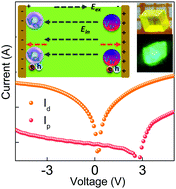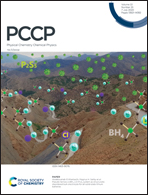Negative photoconductivity in Cs4PbBr6 single crystal
Abstract
Zero-dimensional (0D) inorganic perovskites, particularly Cs4PbBr6, have been attracting wide attention due to their excellent photoluminescence (PL) efficiency and spectral color purity. The PL origin of Cs4PbBr6 and the underlying photophysics, however, draw intense debate and remain controversial. Revealing the photo-excited carrier generation, separation, and recombination, as well as the roles that mobile ions play, is crucial and helpful to deeply understand the photo-physical property. Photoconductivity is one of the effective approaches to closely explore the photophysics. In this study, high-purity Cs4PbBr6 single crystals were grown from Cs-enriched solutions. Negative photoconductivity was first observed in Cs4PbBr6 through Au-crystal-Au photo-detectors, and the photocurrents under high illumination power are similar to those of the diode. It is considered that the built-in electric field produced by the charged excitons combined by the neutral excitons and vacancies of Br (VBr+) are responsible for the eccentric negative photoconductivity phenomena because of strong Coulomb interactions and low VBr+ formation energy in Cs4PbBr6.



 Please wait while we load your content...
Please wait while we load your content...